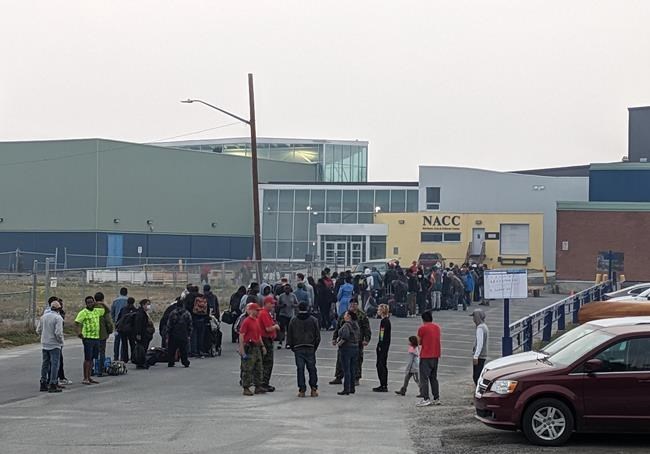YELLOWKNIFE — Wildfires have ripped through tens of thousands of square kilometres in the Northwest Territories, forcing the government to declare a state of emergency and residents of its capital city to flee.
Here are five things to know about the situation:Â
Extreme fire danger
The Northwest Territories has been grappling with 236 wildfires that have already burned an area almost four times the size of Prince Edward Island, or the equivalent of more than 21,000 square kilometres.Â
The blaze outside Yellowknife has been advancing since it breached a firebreak over the weekend and was burning 17 kilometres outside the city as of Wednesday evening. Without rain, authorities have said it's possible the fire could reach the city's outskirts by the weekend.
Winds have been pushing another fire near Hay River, near the Alberta boundary, back onto itself, stalling the flames about 10 kilometres from the community on the south shore of Great Slave Lake.Â
Territorial capital evacuated
An evacuation was ordered Wednesday evening for Yellowknife, which has a population of about 20,000 people, as well as the nearby First Nations communities of Ndilo and Dettah. The government is urging residents to leave by Friday afternoon. Residents living along Ingraham Trail and in Dettah, Kam Lake, Grace Lake and the Engle Business District are at highest risk and were told to leave immediately.Â
The territory has told residents it is safe to leave Yellowknife by road using the Yellowknife Highway, or Highway 3, which is also the only main road connecting the city to points south.Â
Residents leaving by highway will be escorted from the city through the active fire zone if there are smoky conditions, the government has stated.Â
Trouble elsewhere in the territory
About 6,800 people in eight other communities, including Fort Smith, Enterprise, Jean Marie River, Hay River and K'atl'odeeche First Nation, have already been forced from their homes.
About 80 per cent of Enterprise, including homes and businesses, was destroyed but everyone made it out alive, said Blair Porter, the community's senior administrative officer.
There have been no reports of injuries or fatalities due to the wildfires.
The community of Kakisa in the South Slave Region is on an evacuation alert, while the town of Inuvik to the north is encouraging residents to prepare for an evacuation.Â
Alberta opens up to evacuees
Yellowknife evacuees travelling by air to Alberta will be directed to Calgary. No government supports will be available to Yellowknife evacuees outside of designated evacuation centres.Â
Reception centres for Yellowknife evacuees are set to open Thursday in Valleyview, Fox Creek and Red Deer. The closest centre is in Valleyview, which is more than 1,000 kilometres by road from Yellowknife.
Evacuees from the South Slave region, including Hay River and Enterprise, who need support are being directed to Leduc, Alta., just south of Edmonton, the government said. An evacuee reception centre is set to open there Thursday. Residents who left by air to Wood Buffalo, Alta., will continue to receive supports in Fort McMurray, Alta.Â
Jean Marie River residents have been sent to Fort Simpson.
Reception centres in the Alberta cities of St. Albert and Grande Prairie are full, the territorial government said.
Military boots on the ground
Members of the Canadian Armed Forces have been mobilized to the Northwest Territories this week.Â
About 100 members from two Canadian divisions based in Valcartier, Que., are on the ground helping with firefighting duties. Another 20 are working with territorial officials with planning and co-ordination.Â
This report by The Canadian Press was first published Aug. 17, 2023
Brittany Hobson, The Canadian Press



